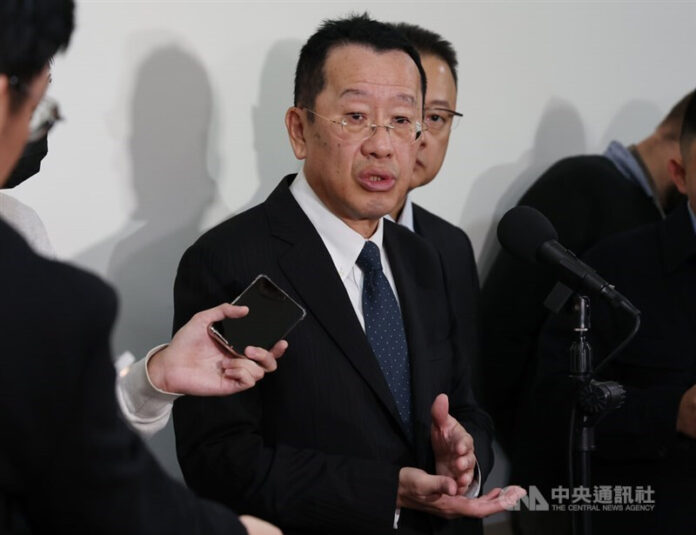Introduction
Taiwan’s Defense Minister Wellington Koo (顧立雄) recently addressed the challenge posed by an American scholar’s call for increased transparency regarding Chinese military activities in Taiwan’s air defense identification zone (ADIZ). Koo described this request as a “dilemma” for the Ministry of National Defense (MND), as the need for openness must be balanced with the risks to national security.
Taiwan’s Commitment to Transparency
During a legislative session in Taipei, Koo responded to criticism about Taiwan’s military reporting system, acknowledging that the MND aims to provide more transparency to the public. However, he pointed out that releasing too much information, particularly about the People’s Liberation Army (PLA) incursions, could compromise Taiwan’s intelligence capabilities and the methods used to monitor these threats.
Koo emphasized that the military will continue to evaluate its public disclosures while ensuring that sensitive intelligence sources remain protected. This ongoing balance between transparency and security has become a significant concern for Taiwan’s defense strategy in the face of increasing Chinese military pressure.
The Call for Transparency and Its Challenges
Thomas J. Shattuck, a special project manager at the University of Pennsylvania’s Perry World House, voiced concerns about the lack of clarity in Taiwan’s military reporting practices. He criticized the MND for making frequent, unexplained changes in its public reporting of Chinese military incursions, which has led to inconsistencies between Chinese and English versions of the reports.
Shattuck specifically pointed out that the MND had begun, then halted, reporting on Chinese balloons without clear explanations or logical reasoning. He argued that these inconsistencies and abrupt changes could undermine Taiwan’s public message and lead to diminishing the perceived significance of the military threat, both within Taiwan and in international circles, particularly in the United States.
Taiwan’s ADIZ and the PLA’s Growing Presence
Taiwan’s ADIZ is a self-declared airspace where Taiwan monitors and identifies foreign aircraft. While the ADIZ is not part of Taiwan’s territorial airspace as per international law, it serves as a vital component of Taiwan’s defense strategy against Chinese military activities.
Since September 2020, the MND has provided a “real-time military update” documenting PLA incursions into Taiwan’s ADIZ. This initiative aims to inform both domestic and international audiences about the increasing military threat posed by China.
| Date | Event | Focus |
|---|---|---|
| September 2020 | MND begins daily real-time updates | Tracking PLA incursions |
| Ongoing | PLA incursions into ADIZ | Increasing Chinese military activity |
| 2024 | Discussions on transparency in military reporting | Addressing inconsistencies in updates |
The Dilemma of Public Reporting
The dilemma faced by the MND, as Koo explained, lies in the need to maintain transparency without exposing Taiwan’s intelligence and reconnaissance methods. While Shattuck’s criticism is focused on the need for clear and consistent reporting, Koo underscored that revealing too much could inadvertently give China insights into Taiwan’s defense capabilities, potentially weakening Taiwan’s strategic advantage.
Frequently Asked Questions (FAQs)
1. What is Taiwan’s ADIZ, and why is it important?
Taiwan’s Air Defense Identification Zone (ADIZ) is an area around Taiwan where it monitors and identifies foreign aircraft. It is critical for Taiwan’s defense strategy, allowing early identification of potential threats from China.
2. Why has Taiwan’s Ministry of National Defense been criticized for its reporting practices?
Taiwan has faced criticism for frequently changing its reporting practices, including inconsistencies between Chinese and English versions of reports and halting updates without clear explanations. This has raised concerns about transparency and the effectiveness of Taiwan’s public communication on security issues.
3. How has Taiwan responded to calls for greater transparency?
While Taiwan’s Defense Minister has pledged to review and enhance the transparency of military updates, he also emphasized the importance of safeguarding Taiwan’s intelligence capabilities and reconnaissance sources. The MND seeks to find a balance between transparency and national security.
4. What impact could inconsistent reporting have on Taiwan?
Inconsistent reporting could potentially downplay the seriousness of Chinese military threats, both in Taiwan and abroad. This could result in less concern from the public and international community about the growing military pressure from China.
5. How does Taiwan’s defense ministry ensure national security while being transparent?
The MND aims to provide regular updates on military incursions while protecting sensitive intelligence sources and methods. They are carefully evaluating how much information to release in order to maintain both transparency and security.
Conclusion
Taiwan’s defense minister, Wellington Koo, faces a challenging dilemma in balancing the need for transparency with the responsibility to protect national security. As Chinese military activities in Taiwan’s ADIZ increase, Taiwan must carefully navigate its reporting practices to inform the public and international community while avoiding the disclosure of sensitive intelligence. This ongoing issue highlights the complexities of modern military communications in an era of rising geopolitical tensions.
